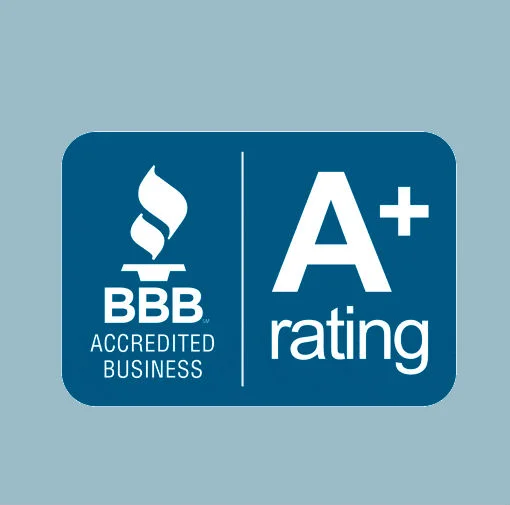Reputation Management: 3 Steps to Winning the Patient Ratings Game
If nobody’s aware that your patients are satisfied, does it even matter?
Related: 9 Essential Steps to Improve Doctor Ratings Online

- Build the foundation for a positive online and offline reputation
- Develop your reputation through proactive outreach
- Avoid the 7 deadly sins of online reputation management
Following these steps will put you on the fast track to a magnetic reputation that attracts the patients you want.
Step 1: Start by creating a great patient experience.
Before you pursue ratings, reviews, referrals or any other sources of feedback, it’s important to establish a foundation for your online and offline reputation. Without a solid foundation, you’ll always feel like you’re plugging holes and bailing water, instead of sailing. Let’s pause and take a look in the mirror. Here are the areas of your practice that you should scrutinize:
- Office conditions – Is your carpet past its prime? Do your decorations inspire warmth and comfort, or sickness and isolation? Your office aesthetics and amenities affect your patients’ moods and spark their first impression of you. Once you begin soliciting online reviews (more on this later), you don’t want to see “disgusting bathroom” or “worn-out furniture” anywhere near your name. Hire a decorator and a cleaning crew. Offer free WiFi and coffee. Not only will your patients appreciate and remember it, but your staff will also feel more comfortable and friendly.
- Staff friendliness – A patient’s interpersonal experience with your practice can sway his or her overall opinion. This makes friendly staff members (especially the front desk team) indispensable. Hire well, create an enjoyable work environment, treat everybody as an equal and don’t be afraid to pay for talent — you’ll see the return.
- Wait times – If you can avoid it, don’t pack your schedule. When visiting a doctor’s office, patients tend to expect long wait times. But that doesn’t make waiting any less irritating. Break that mold by demonstrating respect for your patients’ time. Doing so will distinguish you and your practice before you even walk in to greet them.
- Online profiles – Healthgrades, Vitals, Facebook, Google+ and more. Whether you like them or not, online profiles are important tools for distributing your brand and capturing patient reviews. While tedious, claiming your profiles (and filling them out!) will help prospective patients feel like they’re seeing an established, credible doctor. Finally, make sure all addresses and phone numbers are correct, especially if you’ve recently changed offices.
Do not skip this step. Optimizing these basic aspects of your practice is necessary to generate consistent positive reviews and patient referrals. If any of the above factors are substandard, it can overshadow even the most brilliant physicians.
Finally, managing your reputation is a team endeavor. Much like hiring the perfect person for your front desk, you’ll need the proper person to monitor your online presence. Doctors don’t usually have the bandwidth to patrol their own profiles, so give your reputation management the attention it deserves by hiring and delegating appropriately.
Step 2: Expand your reputation through proactive outreach.
Now that you’ve laid a solid foundation for building a great reputation, it’s time to come out of your shell and engage past, current and prospective patients.
Start Generating 5-Star Reviews - There’s only one path to consistent patient reviews — you have to ask for them. At Healthcare Success, we use sophisticated software to automatically:
- Reach out to patients
- Assess their level of satisfaction
- Encourage satisfied patients to post a review
- Notify our clients of dissatisfied patients
Sophisticated software is an effective way to engage patients in a prompt, professional manner. And if you’re a medium or large practice, your substantial patient base may mean that a programmed outreach system is the only practical way to consistently generate positive reviews. However, requesting patient feedback with occasional, manual email blasts is better than waiting for patients to initiate an online review themselves.
WARNING: Soliciting reviews requires careful wording and timing. Do your homework or hire a professional… or you’ll potentially alienate quality patients.
Provide Patients With an Outlet for Complaints - This doesn’t necessarily mean you should request negative feedback, but you should make it easy for patients to voice their dissatisfaction to you directly. Also, patients should know that if they were to contact you, you’d consider their issue, take action and, hopefully, resolve their problems. Although it may be uncomfortable for you, it’s better to hear complaints straight from the patient (in a private, controlled setting) than to read them online. Treat each encounter as an opportunity for progress. That way, your practice will improve over time and your flow of negative input will shrink.
Get the Word Out With a Patient Referral Program - The best way to attract new, quality patients is to leverage your present patient base. But your current patients will only feel motivated to refer you if they love your practice. Recalling Step 1, this is one of the many instances where a clean office, friendly staff, and short wait times will pay off.
Understandably, some doctors are shy about asking patients for referrals. It may feel awkward at first, but you still need to do it. And, what you may not realize is that patients appreciate being asked. (Hint: When the doctor does the asking, it's more powerful and effective.)
An easy and effective way to ask for referrals is to give patients a referral card. You might an acknowledgement for both the referring and referred patients, such as a restaurant gift card or a small gift. Your referral card should include:
- A brief greeting
- Space for the referring patient’s name
- Encouragement to leave a review on your social media or doctor review profiles (provide links)
The new patient should bring the referral card to their first appointment. Ideally, your patient referral system will create a perpetual cycle of new patients. After patients hear about you from a friend or family member, they’ll check out your online profiles. Then, after reading your 5-star reviews, they’ll see you for treatment and post a review themselves. Finally, they’ll refer other friends and continue the cycle.
Step 3: Avoid the 7 deadly sins of online reputation management.
Once you establish a strong online presence, you’ll have to deal with the trickiest aspect of reputation management: the omnipresent Internet. It’s easy to thank someone for positive feedback, but a nasty online review can create a groundswell of negative emotions — anger, insecurity and hurt feelings are all common reactions. Fortunately, this doesn't happen often, but handling these situations well requires a level head. I'll use this opportunity to reemphasize the importance of selecting the right person for each reputation management responsibility.
Here are the seven deadly sins of reputation management. Avoid them whenever possible:
- Defensiveness – Never answer a negative review with your own aggression — no matter how tempting it is. Stay professional, understanding, brief and genuine.
- Ignoring reviews – Everyone loves acknowledgment. Make sure to thank the patients who offered you praise. They’ll be more likely to refer you — and it’s just a nice thing to do. For negative reviews, always give a response. Not answering will communicate that you don’t care about your patients’ experience or prefer to ignore a problem.
- Online battles – Offer to resolve problems without sidestepping any specific criticisms. Then after answering concerns, politely suggest taking the conversation offline.
- Neglect – Spend one to two hours a week monitoring and interacting with your online presence — Facebook, Healthgrades — all of it. Many practices will neglect Google+, but, in addition to helping your online reputation, Google reviews improve your visibility in local searches. Pro tip: Stay prompt by setting up automatic notifications for each practice.
- Fake reviews – Many websites have protocols to catch fake reviews and punish offenders. Getting caught can devastate your online and offline reputation. Plus, by following my advice, you won’t need to fake anything.
- Canned responses – Write unique and specific responses. People can sniff out cookie-cutter answers. And if you give them one, they won’t feel like they’re being treated as individuals, which could spur further outcry.
- Legal action – The ache to your head and bank account is almost never worth legal action. While a situation could arise where action is appropriate, it’s best to find an easier solution.
Reputation management takes time and effort, so don’t be afraid to start small and chunk out the work. For instance, setting up both patient referral and automated outreach systems at the same time is a recipe for chaos. Avoid overwhelming yourself and your staff by focusing on one significant improvement at a time. Finally, remember that your reputation is, in large part, under your control. Manage it wisely.
Related Articles:
9 Essential Steps to Improve Doctor Ratings Online
Beware of These 6 Reputation Management Mistakes Most Doctors Make
Reputation Management Update: What It Means for Business
How to Handle Negative Physician Reviews and Feedback
Preserve, Protect and Defend: Healthcare Reputation Management Tactics









